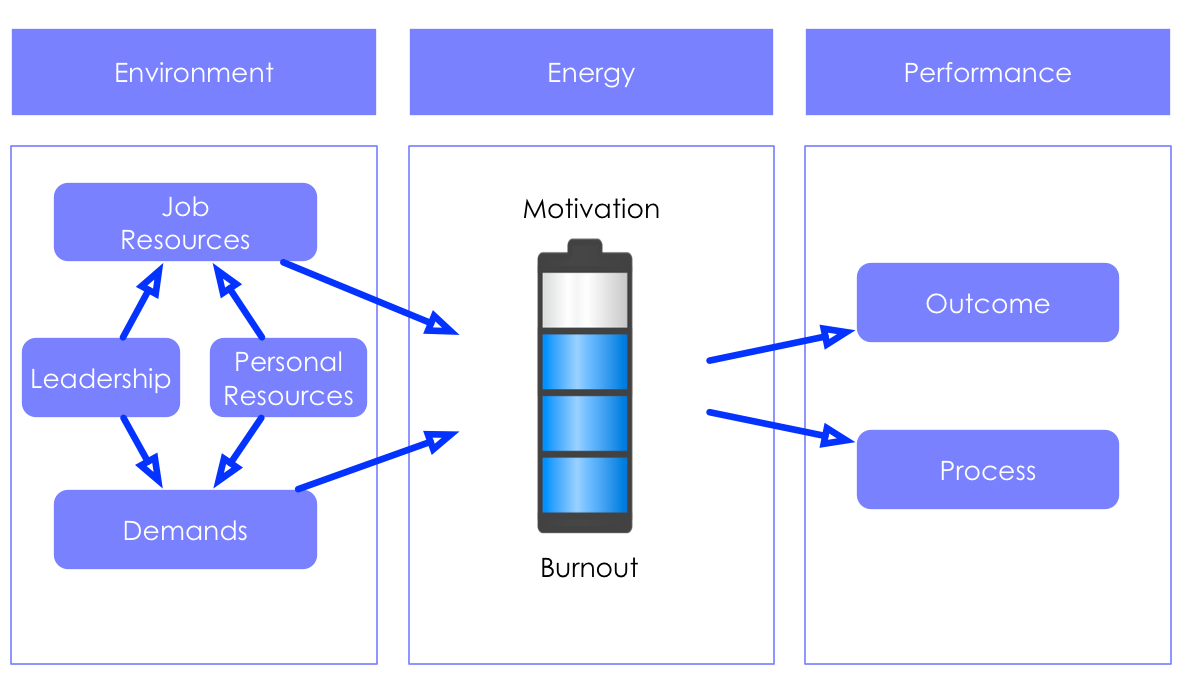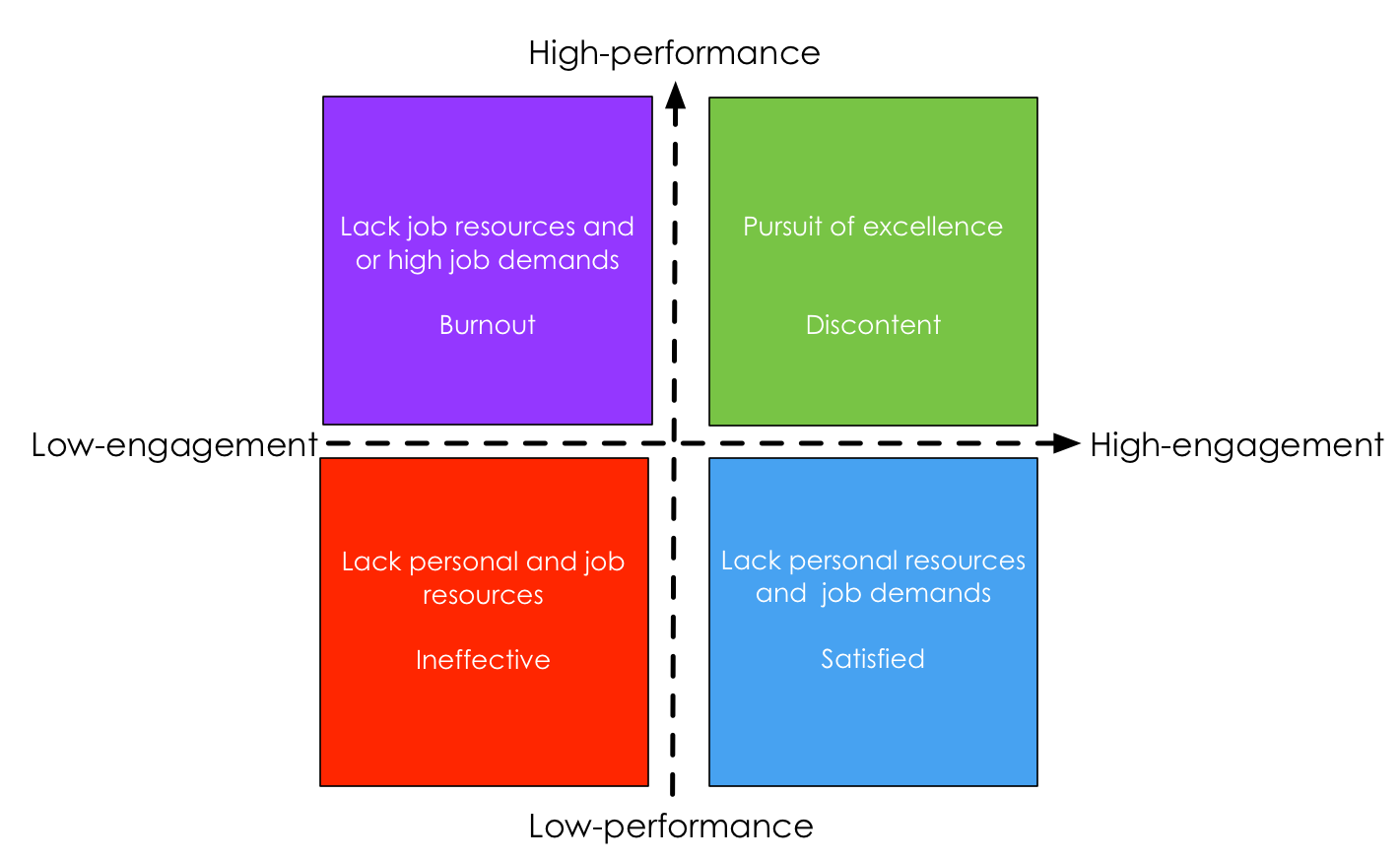The assumption that engagement is somehow strongly correlated with performance is misplaced. Traditional engagement metrics such as satisfaction, happiness, well-being let alone cannot explain behaviours, actions and motivation of a high-performance team. Moreover, there is hardly any strong scientific evidence suggesting that there is a correlation between high-engagement and high-performance. Given the similar type of environments, two teams with the same level of engagement may have different levels of performance - one can be high-performing another average performing. A high-performing team can be highly engaged but vice verse is not always true. In the context of engineering teams, high-performing teams usually show a bit of discontent and frustration which the traditional model of engagement (e.g. a happy employee is a productive employee) will be unable to capture or explain.
Performance as a function of environment and motivation
Performance of a team can be described as a function of resources, demands, leadership, and motivation (inspired by JDR-WE model proposed by Bakker & Demerouti et al and further refined by Xanthopoulou et al). In the context of engineering teams,
- Demands refer to an individual, team, work, or organisation related challenges that require sustained cognitive and/or emotional effort. For instance, delivering a new product feature under time pressure.
- Resources refer to characteristics that help to cope with demands (e.g., team autonomy, information flow, alignment between teams, support for taking risk, organisational culture), or functional in attaining goals (e.g. purpose and vision, performance feedbacks, objectives and key results), or lead to personal growth and development (e.g., coaching by the engineering manager, development programs, interest groups). A resource can be job-related or personal. Personal resources such as work-related technical skills, mastery or craftsmanship, communication skills, self-efficacy, resilience, resourcefulness, and self-initiative.
- Environment refers to interplay between job resources, personal resource, demands, and leadership.
- Motivation refers to a positive affective-motivational state of mind that is characterised by vigor, dedication, and absorption. Motivation represents a positive energy, at the other end of the spectrum is we have burnout.
Vigor is characterised by high levels of energy and mental resilience while working. Dedication is characterised by being strongly involved in one’s work and experiencing a sense of significance, enthusiasm, and challenge. Absorption is characterised by being fully concentrated and happily engrossed in one’s work, whereby time passes quickly and one has difficulties with detaching oneself from work.
- Leadership is responsible for resolving conflicts and increasing cooperation within the team, developing a safe environment for the team, creating energy and enthusiasm, last but not least challenging the team by setting stretch goals.
- Performance refers to behavior as well as outcomes. Performance can be divided into two types: process performance (e.g. test-driven development, pair programming, continuous delivery) and outcome performance (e.g. high-quality but frequent releases of new product features).
Process performance refers to the particular actions or behaviors which employees exhibit to achieve performance (effective outcomes) or what employees do in their work situation. Outcome performance refers to the products or services that are produced and whether these are consistent with the overall strategic goals of the organization.

Few empirical observations,
- A team is high-performing when both resources and demands are high. A high-caliber team without enough challenge will never attain their potential.
- A team is highly engaged when the balance between demands and resources is positive. This is also possible when a low-caliber team is not challenged enough.
- A high-performing team will eventually lead to burnout if the balance between demands and resources is negative - in engineering, generally the time pressure.
High-performers often downplay their achievements
If anything a high-performing team demonstrates a bit of discontent and frustration. They set a higher benchmark for themselves. In fact, they are in pursuit of greatness which can be achieved only by going through the psychological pain. High-performing teams celebrate wins but often downplay their achievements and to some extent are self-critical. Ability to downplay their achievements and being self-critical are strong indicators of high-performing teams. They are continuously working towards achieving excellence in their work. They are driven and they know where they want to go.

Highly engaged but average performance
Whereas highly engaged but not so high-performing teams either lack the mastery and purpose or set an average benchmark for themselves. They are very satisfied with their work and they don’t see any issues or need to improve. Teams may have a tendency to compare their performance with other teams with equal or lower benchmarks. What they should be really doing is comparing their performance against a higher benchmark or a high-performing team. Moreover, if the team is surrounded by cheerleaders who can hardly offer any valuable criticism or constructive feedback, this can lead teams misreading their performance levels. Last but not least, teams may demonstrate strong process performance but a sub-optimal outcome performance. This is a strong indicator that the team is primarily output-driven and not outcome focused.
Where to go from here
In this article, we intended to highlight the key characteristics of high-performing teams. To be a high-performing team, the well-resourced team must realise it's potential which only happens when the team is challenged and engaged. Teams who are highly-engaged and are high-performer are able to create their own resources, which create a positive gain feedback loop. In the next few posts, based on some of the new learnings covered in this post we will discuss how to create a high-performing team.


